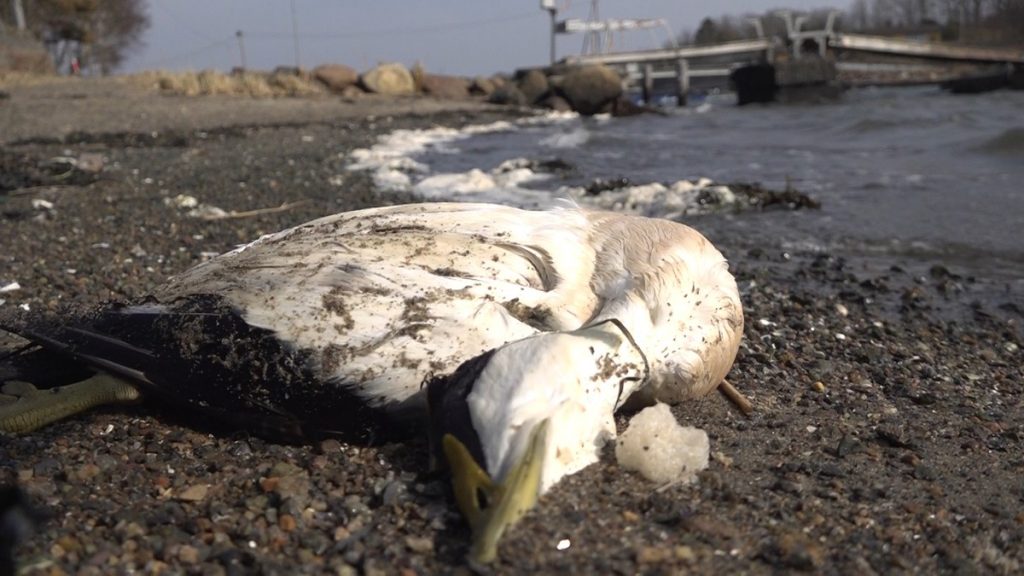Something is seriously wrong with the Oslo Fjord and no one seems to fully understand why.
Both fish and mussels have been disappearing, while the fjord’s characteristic seabirds known as ærfugl (common eider) have been found dead from Agder in the south to Østfold farther north.

Newspaper Dagsavisen has reported that the dead birds are believed to have simply starved to death.
However, experts conclude that only one thing is certain: the Oslo Fjord’s ecosystem has come under severe pressure despite massive efforts to clean up sewage and industrial pollution for decades.
Around 240 dead birds had been found as of mid-April. On Sunday, Norwegian Broadcasting (NRK) reported that around 400 have now been found lifeless along the shoreline.
Per Espen Fjeld of the conservation agency Statens naturoppsyn (SNO) told Dagsavisen a month ago that he fears the real number is several thousand.
They’ve lost major sources of their food, he noted, not least the mussels called blåskjell in Norwegian that once flourished along the fjord and are also widely viewed as a delicacy for human consumption.
Fjeld noted that cod, while plentiful in waters off Northern Norway, has also disappeared along with other popular white fish like sei, lyr and hvitting (all similar to pollack).
At the same time, new and unwanted species have been moving in, including new types of algae and seaweed and, most troublesome, oysters with razor-sharp shells that have been congegrating along the fjord, not least in the area around Fredrikstad and the Hvaler islands. Fjeld says that “presents challenges” to the birds and other species who’ve had their menus upset.
Plastics plague
The waters of the Oslo Fjord have been cleaned up in recent years, especially after major industry ceded now-pricey waterfront areas to real estate developers instead of shipyards and factories.
However, there’s also “an incredible amount of plastic in the water,” Fjeld told Dagsavisen. Despite national efforts to control and clean up plastic waste, the large amounts still found can be deadly to all kinds of marine species who inadvertently consume it and die of malnutrition.
“We’re seeing big changes right now and there’s a lot of concern about them,” Haakon Haaverstad, a marine biologist and colleague of Fjeld at SNO, told NRK over the weekend. “And there’s a lot of marine pollution. We cleaned up the whole area around a year ago and now were seeing more plastic garbage washed in from sea.“
There was another large fjordside clean-up effort just last autumn, here on the beach at Huk on Oslo’s Bygdøy peninsula. It hasn’t seemed to help.
The shores of the Oslo Fjord and Skaggerak farther south have also been littered in recent weeks with millions of tiny plastic pellets that spilled from a damaged container on board a ship during a storm in late February. The shipping line and its insurance company are prepared to cover clean-up costs, but that won’t help marine species that may ingest them.
Starvation
Malin Rokseth Teiten of Norway’s state veterinary institute confirmed that dead birds sent in for testing by authorities in Telemark did indeed die of starvation. “They lacked nutrition, had no fat reserves left and their muscles could no long support their wings for flight,” Teiten told Dagsavisen. “Their digestive systems were empty.” She said several were also plagued by a parasite, while tests for bird flu and bacterial infections were negative.
More tests are now underway, while attention is also turning to why the fjord has been all but emptied of fish.
Newspaper Aftenposten reported late last year that a new report from marine competence firm SALT, commissioned by the state environmental directorate (Miljødirektoratet), cited higher use of the fjord by ship traffic, higher concentration of toxics in the water and lots of fishing.
This adds up to the massive bird kills reported across the world as shown below:
What’s going on in our atmosphere? Are these mass die-offs only linked to starvation or ecosystem collapse? More on Strange Sounds or Steve Quayle. [VG, New In English]












When you start digging in under-water sediments, it will spread ttrough-out the water. Old pollution become as new.